On Tuesday, after a morning meeting, wind and dust slowed travel as the weather patterns of Spring approached New Mexico. I drove from Santa Fe to Moriarty for a quick dose of all that remains of a portion of Route 66 (now State Route 333) between Moriarty and Tijeras.
Such drives are a conscious rejection of progress and resistance to reengineered traffic flows that declare Interstate 40 the chosen path. In this context, exploration and immersion deny pragmatic efficiency in search of a blended whole. Except when nature intervenes—on Tuesday, Moriarty was a mass of long-haul trucks in shelter from dust storms that compromised the Interstate and repopulated the Mother Road.
Route 66 is a cult full of quotations—often as a periscope into more innocent times when journeys west were full of hope and opportunity. Like many places in New Mexico, it’s an invitation to decipher layers of place and landscapes.
In anticipation of the road’s centennial next year, the New Mexico True website expands on John Steinbeck’s “mother road” appellation:
In its heyday, all 535 miles of New Mexico’s Route 66 bustled with life and played home to some of the most iconic experiences of [the] American West: herds of antelope on the high prairie, dramatic mountain vistas, and the tribal cultures of New Mexico’s native Puebloan people. Today, travelers can still take in the nostalgia of the Mother Road, neon signs and all.
In my book, Sustaining a City’s Culture and Character (as I summarized in Next City a few years ago), I explored a fundamental tension at the heart of urban life: the need to reconcile the allure of the familiar, the romantic, and the poetic with the pragmatic demands of efficiency, technology, and progress. We’re not talking about a simple balancing act, a neat equation where a bit of the “old” is offset by a bit of the “new.”
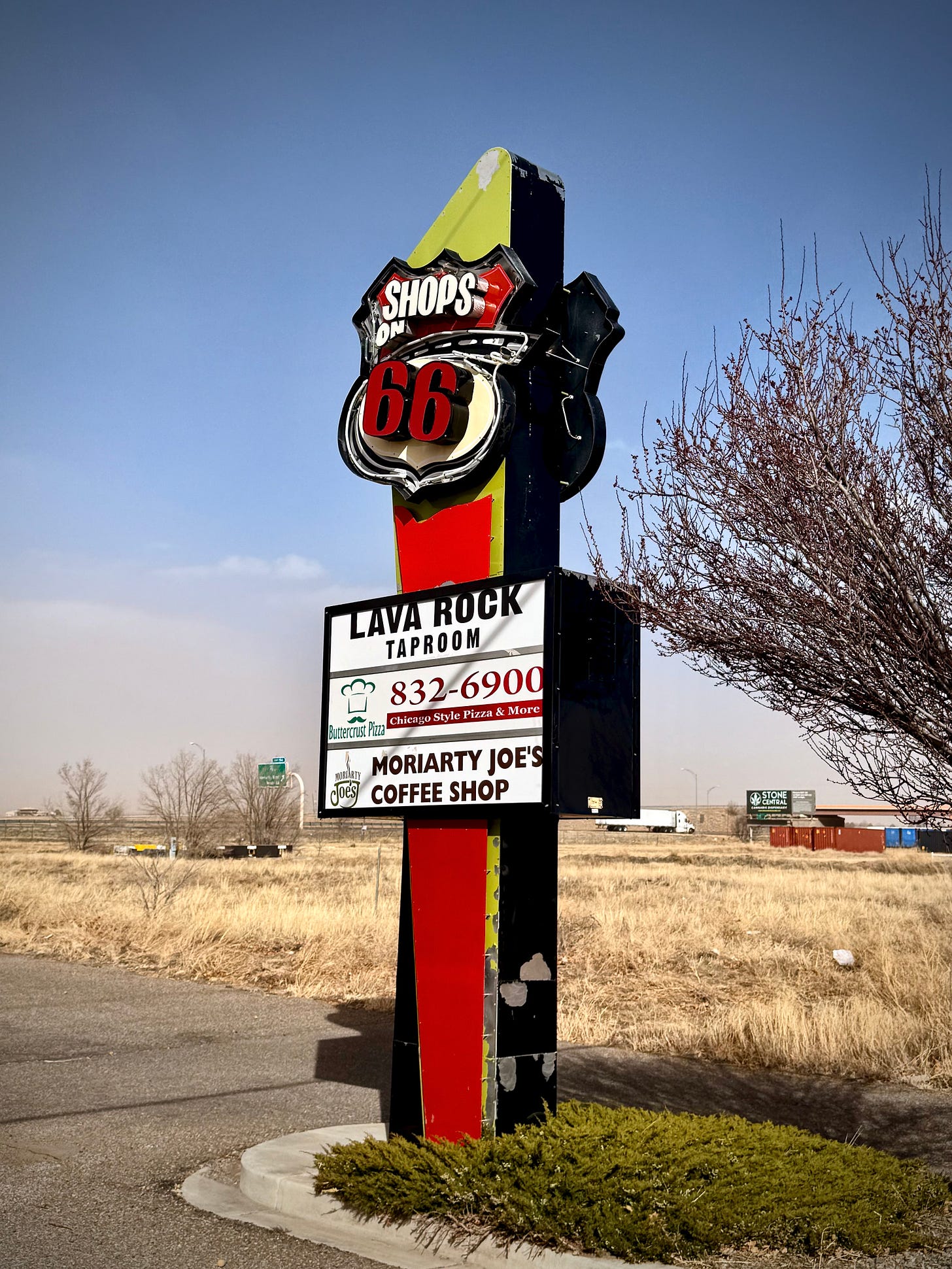
Instead, it’s about something far more complex: a blending, a fusion where the beautiful and the efficient, the tangible and the intangible, intertwine to create a richer, more resilient whole.
Lately, I’ve been navigating this search for context beyond simplistic dichotomies— using fewer words and more direct visual references—that display and embrace the complexity and nuance of human settlement.
As many of my posts have shown, the New Mexico landscape is a compelling laboratory for such study and reflection.
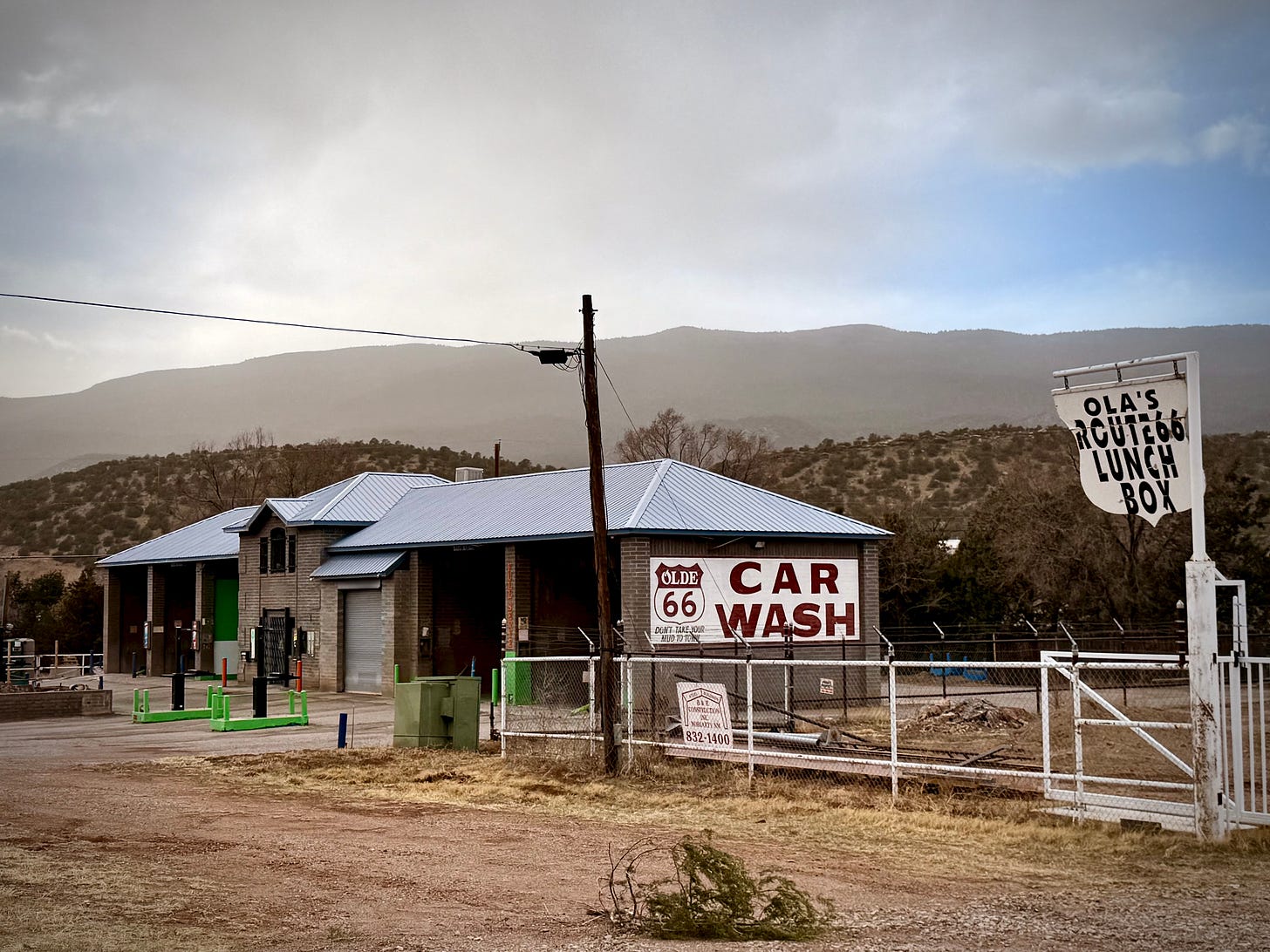
Ultimately, as the captions hint above, I hope my photographs bridge the gap between dreams and checklists, romanticism and pragmatism, and show how things left behind express themselves today, whether in cities or along the way.





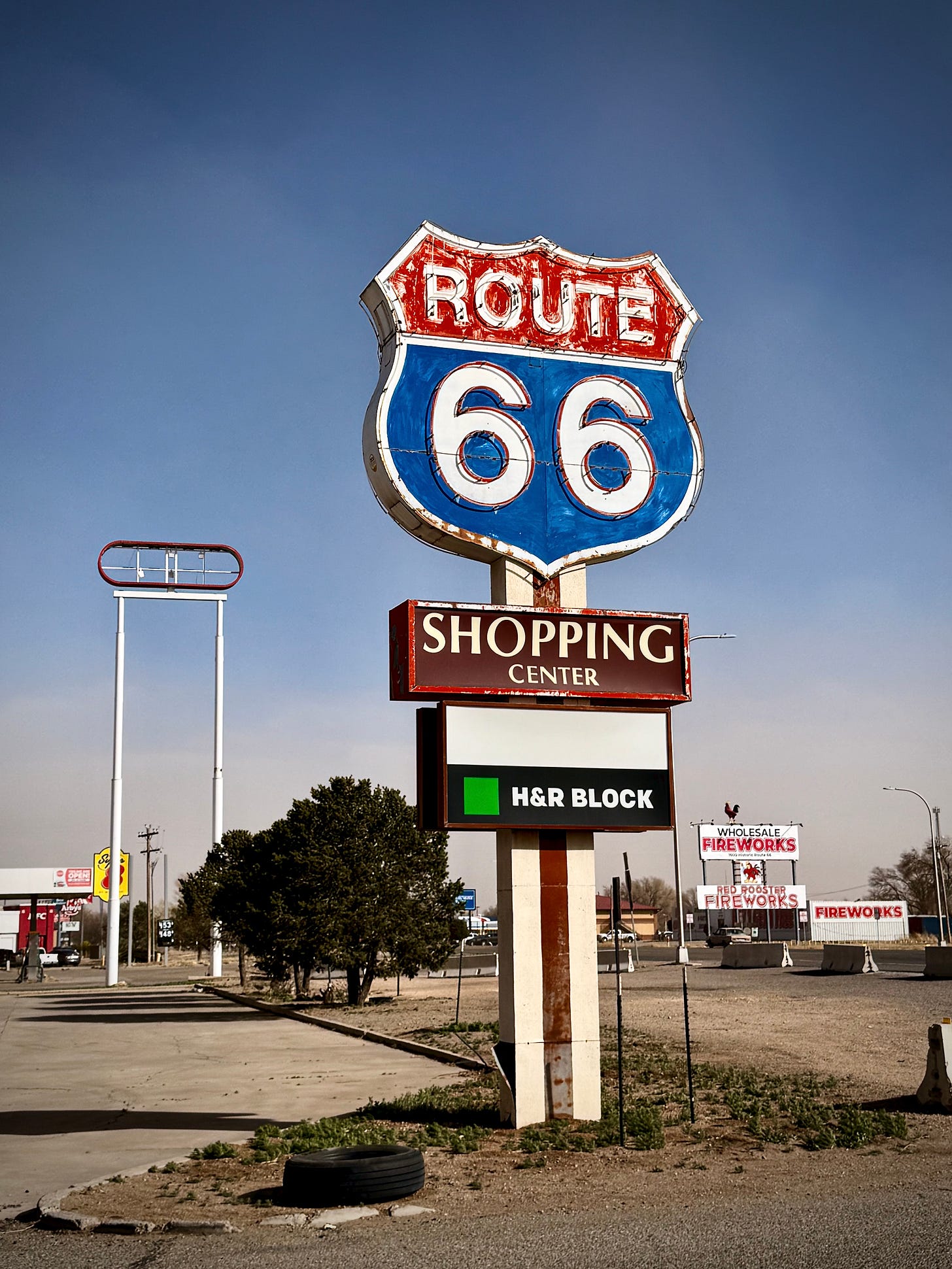
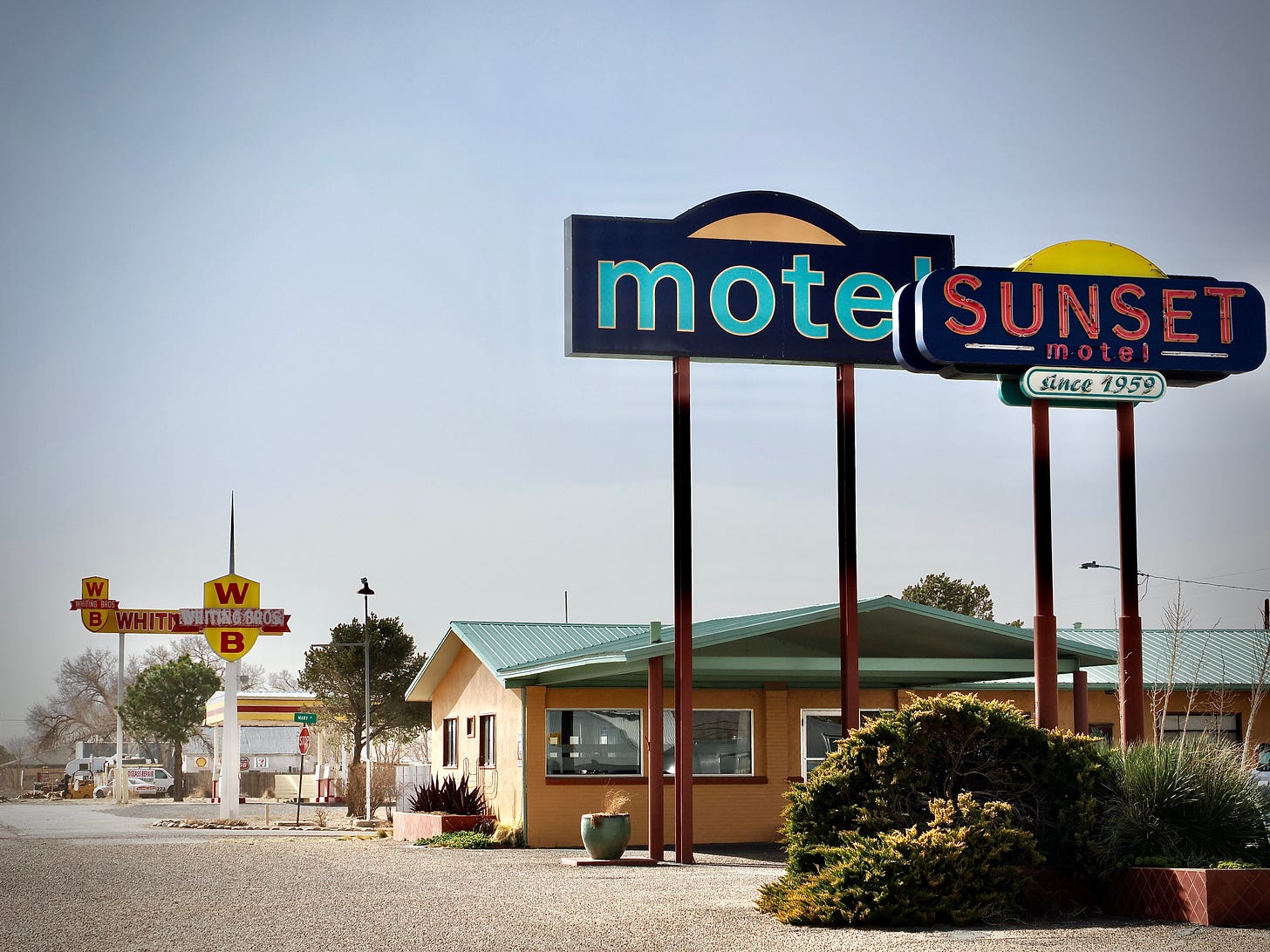
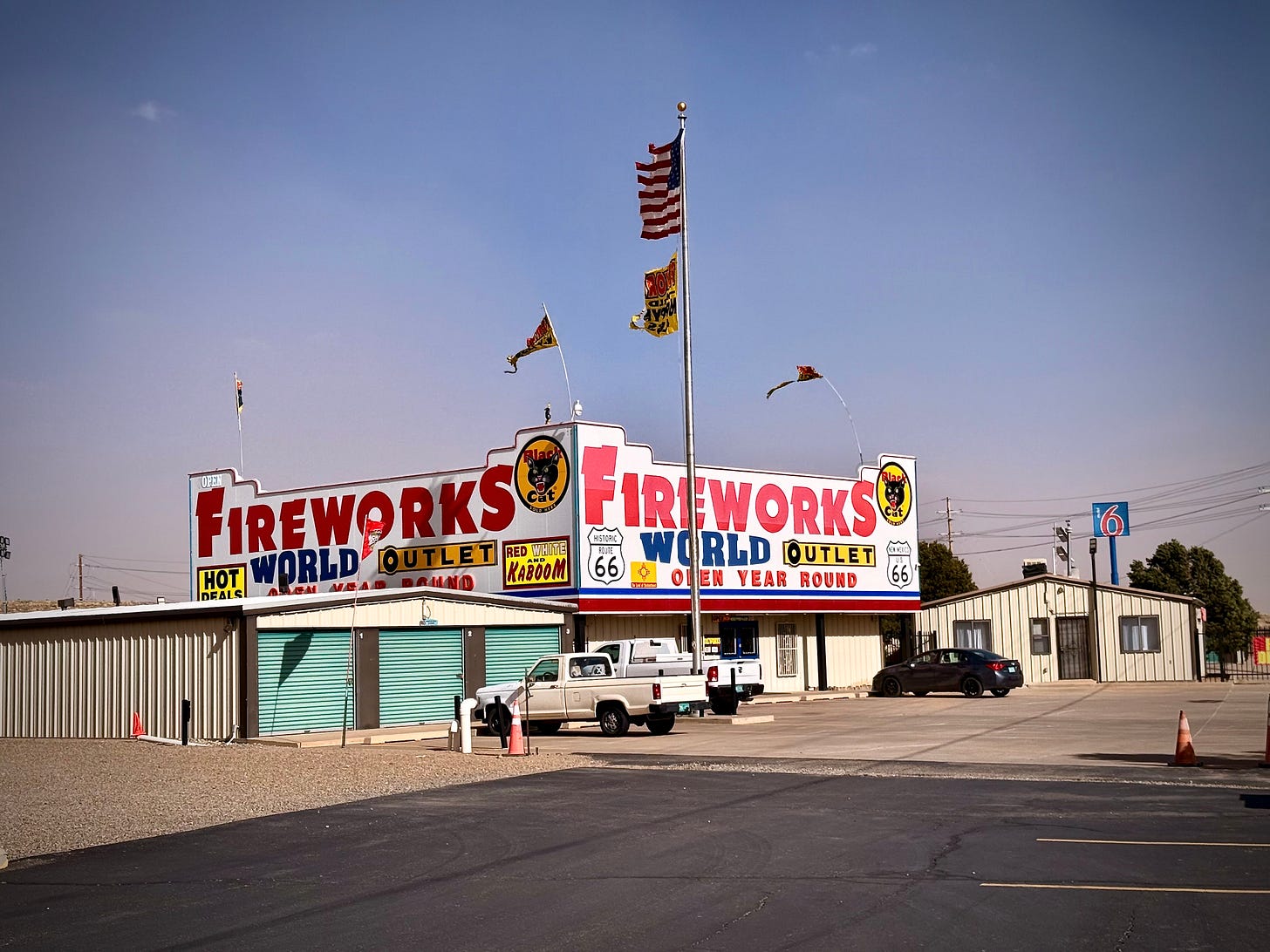
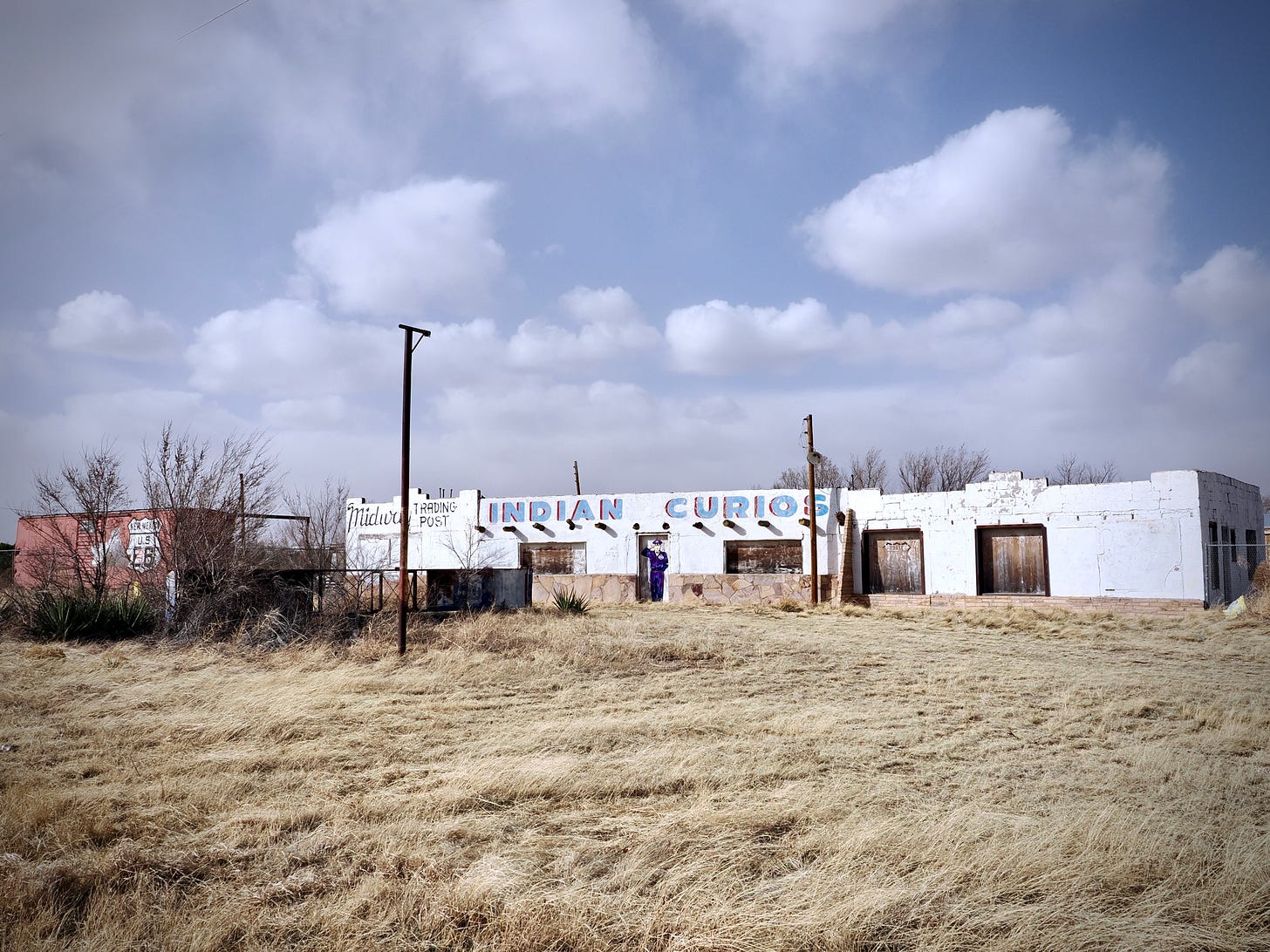
To travel the whole of Route 66 is still a bucket list item for me. Your characterization of the romantic and the pragmatic is apt. I usually refer to it as beauty in the mundane. Nice post.